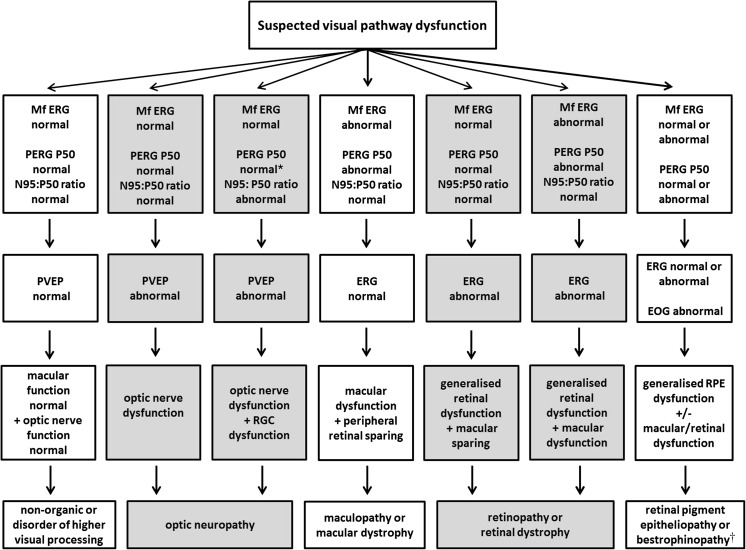LI-LCD Monitor
designed with Luminous Intelligence & LCD technology
Isoluminant pattern reversal that significantly reduces inherent LCD flash artifacts.
Flash artifacts occur when a pattern reversal creates a flash effect on a monitor rather than preserving an isoluminant display. This artifact combines a flash and pattern ERG response, rather than isolating the pERG response.
Explained:
Present-day LCD monitors produce flash artifacts because of an inherent delay and imbalance in the on and off response of liquid crystal technology. Although this delay lasts only a few milliseconds, it is enough to create a distortion to the intended measurement.
When performing a pattern reversal-based test such as a pattern ERG (pERG), the checks (ie, squares) in a checkerboard pattern reverse on and off at a set frequency; as these changes occur, the average luminance across the surface of the monitor should remain constant.
Rather than keeping a constant luminance, the inherent liquid crystal delay causes a flash; this flash elicits a slight full-field ERG response on top of the intended pattern ERG response. The result is a slightly inflated P50 amplitude, due to the compounding effect of B-wave bipolar cell responses.
The Diagnosys solution to this is the advent of LI-LCD, Luminous Intelligence LCD Monitor which practically eliminates the luminance artifact for ISCEV pERG, as well as pattern reversal and pattern onset VEP tests.
Hold a piece of paper in front of the screen to demonstrate the flash artifact produced by the LCD monitor. This video demonstrates how a regular LCD monitor compares to the LI-LCD.
Pattern ERG
From ISCEV Guidelines
The P50 and N95:P50 ratio both reflect macular retinal ganglion cell function and depend upon healthy macular cones. When the P50 alone is reduced or delayed, macular dysfunction is suspected, while a reduction of N95 with preservation of P50 suggests dysfunction of retinal ganglion cells.
The Pattern ERG (pERG) produces a macular retinal ganglion cell response. When done as a follow-up to an abnormal pattern VEP, the pERG can elucidate whether the abnormality is caused by retinal or optic nerve dysfunction. This test may also assist in diagnosing glaucoma, optic neuropathies, and primary ganglion cell diseases.
Bach, M., Brigell, M.G., Hawlina, M. et al. ISCEV standard for clinical pattern electroretinography (PERG): 2012 update. Doc Ophthalmol 126, 1–7 (2013). https://doi.org/10.1007/s10633-012-9353-y
ISCEV Guide to Pathway Dysfunction

Robson AG, Nilsson J, Li S, Jalali S, Fulton AB, Tormene AP, Holder GE, Brodie SE. ISCEV guide to visual electrodiagnostic procedures. Doc Ophthalmol. 2018 Feb;136(1):1-26. doi: 10.1007/s10633-017-9621-y. Epub 2018 Feb 3. PMID: 29397523; PMCID: PMC5811581.

Ordering LI-LCD
Current Diagnosys Customers
If you currently have a Diagnosys system with a 27" LCD monitor, your monitor can be upgraded to include the Luminous Intelligence pERG capability.
If you currently have a Diagnosys system without an LCD monitor, a new LI-LCD monitor can be added onto the existing system.
New Diagnosys Customers
Speak with your Diagnosys representative about LI-LCD capabilities.
